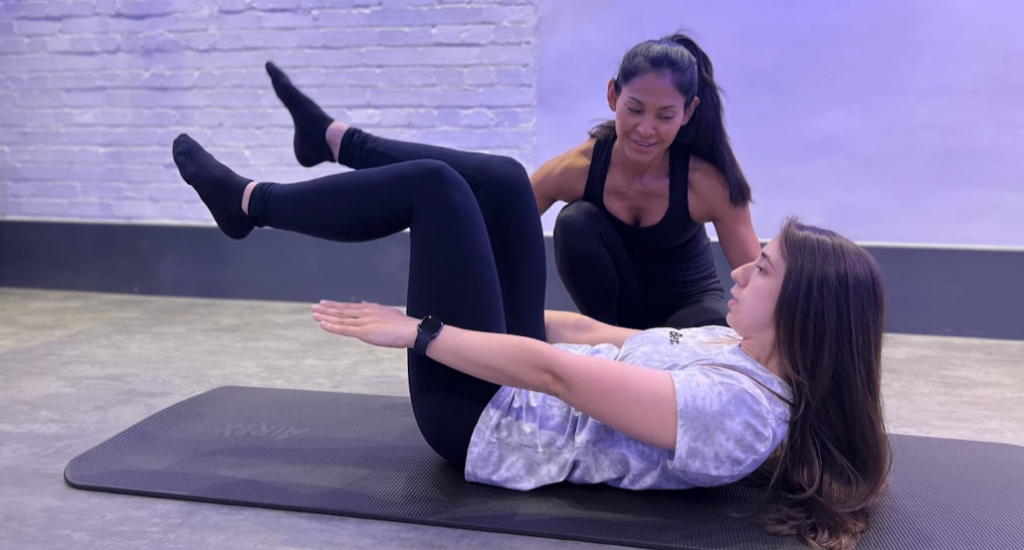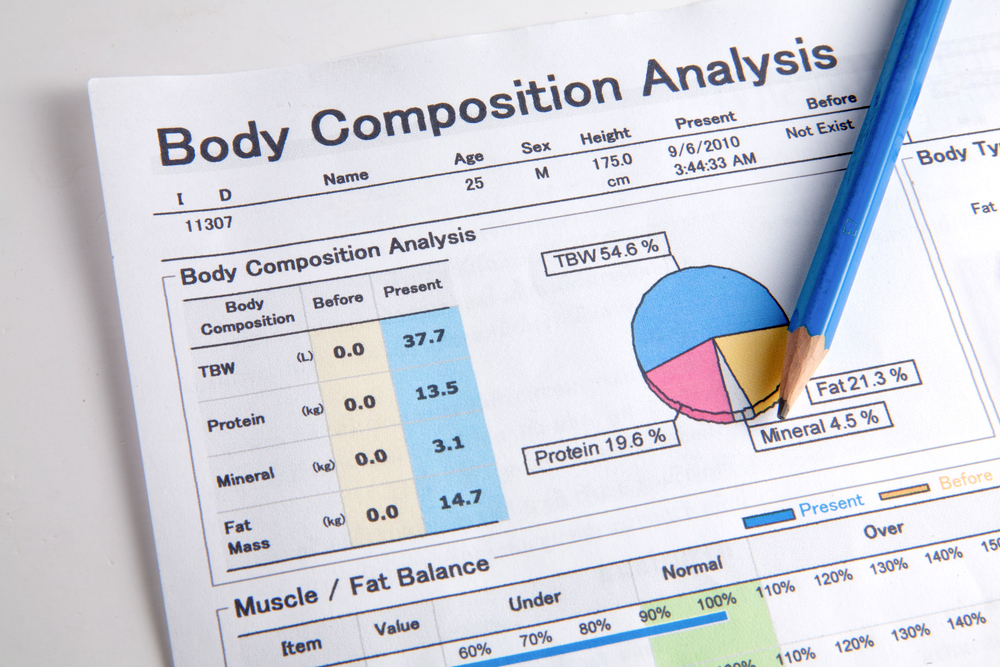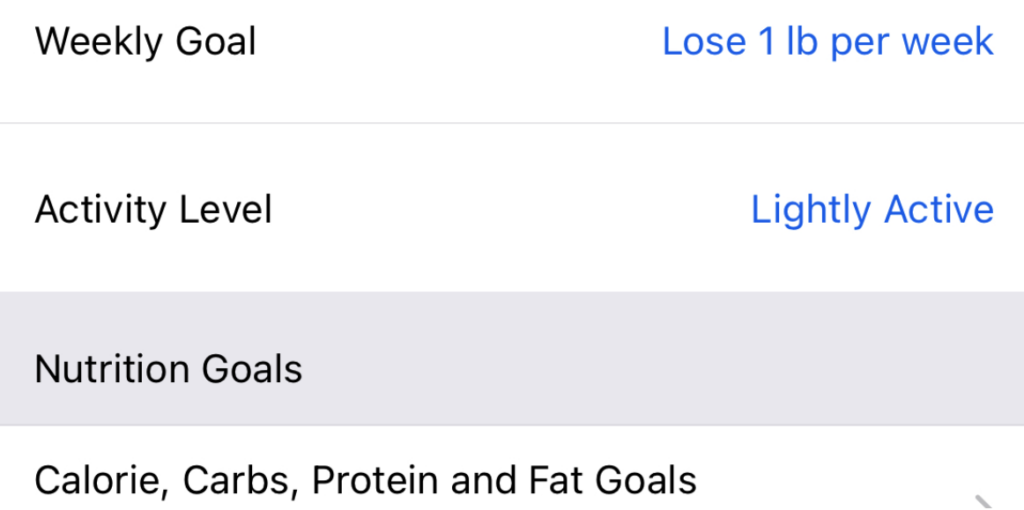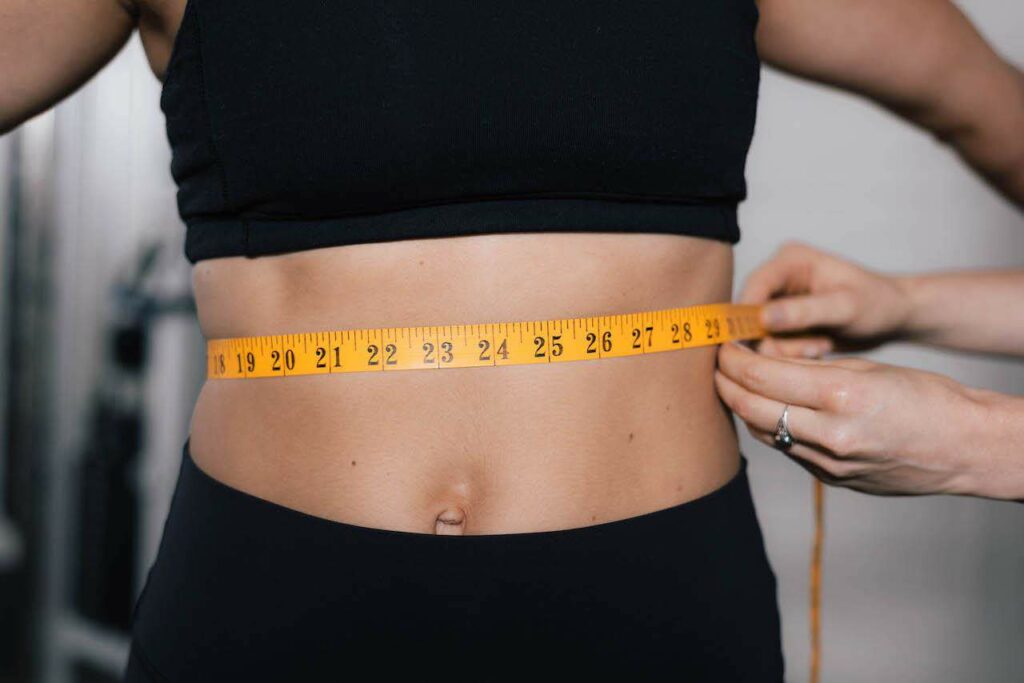Everyone’s weight loss journey can look completely different. Genetics, lifestyle plus exercise and diet choices will all have a huge impact on how someone’s fat loss journey could look and feel.
Women especially can find that their journeys look and feel very different to friends and family members who are on a similar path.
Sitting within a healthy body fat percentage range for your age can be extremely beneficial. Benefits include, reducing risk of heart disease and type 2 diabetes but also reducing the affect of the peri-menopause and menopause symptoms from a physical and psychological stand point.
Short term wise, there are also a number of early benefits of a female fat loss programme that we will run through in this article.
There’s no such thing as ‘spot fat loss’
Let’s start by busting a fitness myth. Unfortunately, there is no such thing as ‘spot reducing fat loss’. We cannot just lose fat from where we want to and keep in other places.

When starting out on a fat loss programme, females generally start to notice a change in areas where there is little fat, such as the collarbones. Fat loss after this however is where genetics comes into play. All body shapes are different, meaning people carry fat in different places and also lose it at different rates in certain areas.
Everyone’s “problem areas” will be different. Some people enjoy having wider hips, and bigger thighs. Others not so much. Women’s fat distribution will also differ to mens. For example women tend to store excess fat in the thighs and buttocks, especially if they have given birth to children. Then during perimenopause and the menopause, this fat storage can shift up towards the stomach area. Men tend to hold excess fat in their stomach area throughout their lives.
Spot fat loss was once considered a ‘training method’ that allowed you to train certain areas of the body and lose fat from the area that you worked. However, this isn’t physically possible. While exercising, fatty acids are being mobilised due to the presence of hormones and enzymes. These create a negative energy balance in the body. Fat is reduced over the whole body. Exercise of certain muscles cannot signal a specific release of fatty acids for the specific fat deposits above those muscles being activated (1).
What does fat loss look like when you begin personal training?
When you start out on your fat loss journey with a personal trainer, your trainer will keep an eye on certain measurements. Your Body Fat % and your Muscle Mass.

These measurements can be accurate and reliable when taken using body composition scales. You may be given a calorie target or a few tips on how to manage your energy balance so that you are consistently in a calorie deficit as well as carrying out a specific training programme to you.
Although body composition scales also take your overall weight, we don’t look at this as it’s never a true telling way of your progress. Water retention, a slightly harder training session the day before and a host of other factors can affect your overall weight.
During a fat loss journey most people find their weight stays around the same or sometimes increases, but their body fat % decreases and lean muscle mass increases. So the number on the scale suggests you are bigger, when in fact you are smaller, leaner and a lot healthier.
When you first start out with a trainer, you will hear the word ‘sustainable’ used quite often. This is because going through a fat loss journey will be a huge habit transformation journey as well. Creating sustainable habits in the short term will help you continue your journey into the long term.

If you were to lose 4lbs in your first week of training because you’ve exercised every single day and not eaten anything, a) you won’t be able to continue this for very long and b) you would probably lose a significant amount of muscle mass as well as water. Not all of it would have been fat. Slow and steady definitely wins the race when it comes to losing fat, but at least you’ll only be in the race once.
How long will it take to lose 10lbs?
Firstly, let’s do the maths.
1lb of adipose tissue stores approximately 3500 kcals. So a deficit of 3500 kcals will result in a rough 1lb fat loss.
A deficit of 35,000 kcals will lead to that approximate 10lb fat loss goal.
So, how quickly can this be done in a sustainable way?
A calorie deficit is when your energy expenditure is higher than your energy intake (food/calories). When you use a body composition scale it will give you your Basal Metabolic Rate. So, if you were to sleep all day how many calories you would lose.
Based on certain factors such as your lifestyle, your age and your goals, your Personal Trainer will be able to give you a calorie target. This target is likely to put you in a calorie deficit of around 500 kcals a day. Over the course of a week your deficit would be 3500kcals, your first 1lb fat lost. A deficit of 500 kcals a day is sustainable. You can still fully focus, you can eat nutrient dense meals and it is unlikely that you will need to restrict any food groups which could later cause you to give up the journey because cravings kick in and motivation goes out the window.

You almost need to make changes without realising you’re making them.
Taking the stairs instead of any lifts or elevators, getting off a train or tube stop early and walking the extra little bit to work. Still eating all the foods you love, just having a smaller portion size. Using a side plate instead of a big dinner plate for example can be a really good way of not feeling like you’re cutting down because of all the space left on the plate. Setting a nighttime routine and getting an extra hour a night…. An extra 7hours across a week, that’s a whole extra night’s sleep.
These are all small changes that when added up and put together are fully sustainable and achievable.
What’s a good fat loss goal to aim for?
Everyone will have a different fat loss goal. Someone who weighs 150lbs will have different goals to someone who weighs 200lbs for example.
But I always tell my clients to focus on the first 1lb.
Then you can focus on the next 1lb.
These 1lbs then start to add up.
The new habits you’ve created to lose these 1lbs also start to add up. If you focus on the end goal right from the start, it can be very easy to lose your motivation along the way. Focus on every single one of the small wins. So whether you are looking to lose 5lbs or 105lbs, focus on the first 1lb first.
Weight loss vs Fat loss
Weight loss and fat loss are commonly used interchangeably when someone wants to reduce their body fat %, look smaller or drop a few dress sizes.

However, in order to achieve these goals, it is your body fat that needs to reduce via a change in your energy balance. Fluctuations in your overall weight are affected by numerous factors, including water retention levels, body fat % and lean muscle mass, so it can be impossible to say when your weight drops that it’s solely because you’ve lost body fat.
When starting out on a fat loss journey, things can be quite daunting. Try not to focus too much on the number on the scale, but rather on how you feel day to day, your energy levels and how you feel in certain clothes.
And lastly, never compare yourself to others. Never compare your weight with other people’s weight. Everyone distributes fat and muscle mass very differently, so two people that weigh exactly the same could have very different levels of health.
References:
- McArdle, William (2017). Exercise Physiology: Nutrition, Energy, and Human Performance. Langara College. p. 821.

